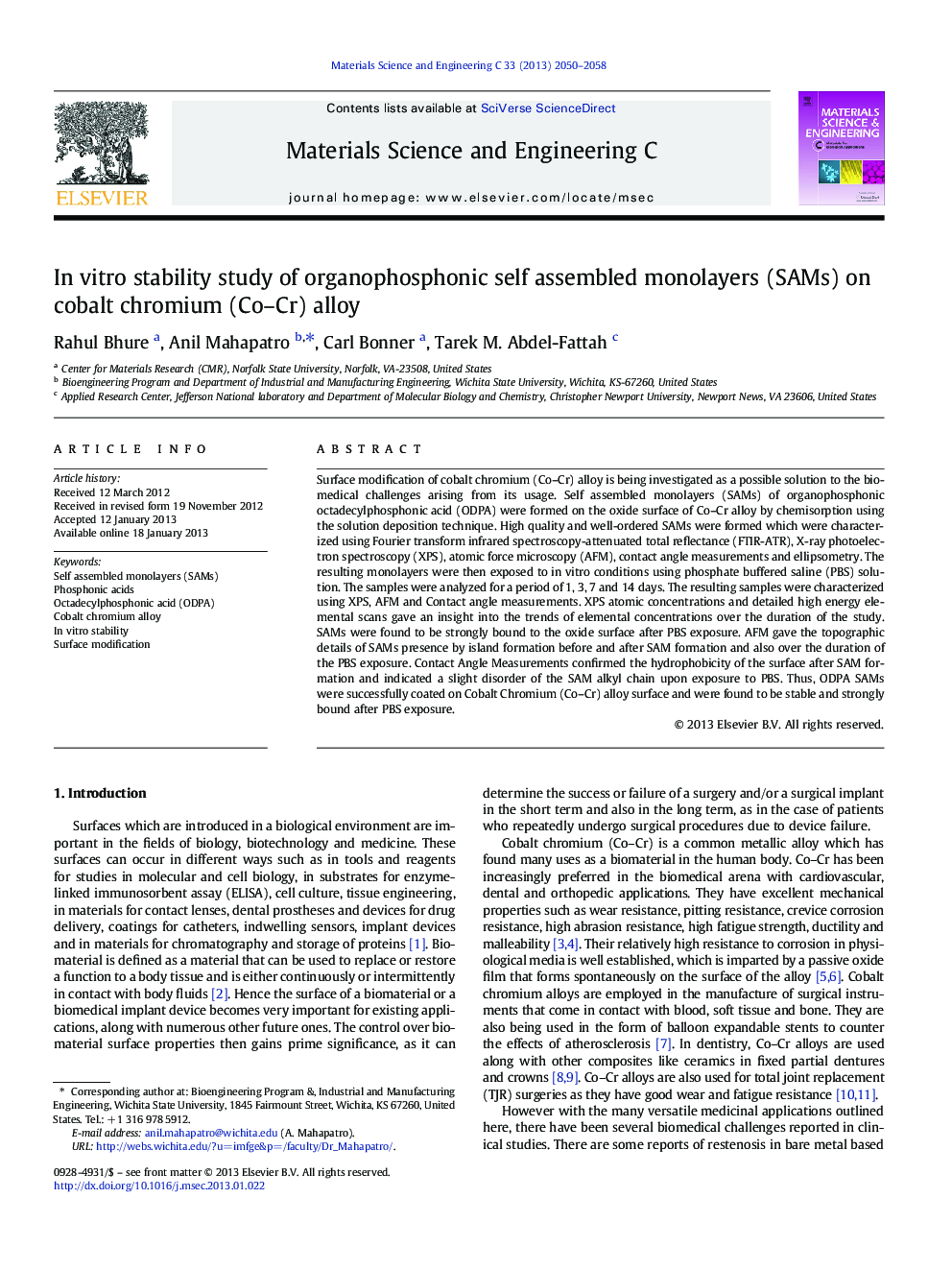| Article ID | Journal | Published Year | Pages | File Type |
|---|---|---|---|---|
| 1429409 | Materials Science and Engineering: C | 2013 | 9 Pages |
Surface modification of cobalt chromium (Co–Cr) alloy is being investigated as a possible solution to the biomedical challenges arising from its usage. Self assembled monolayers (SAMs) of organophosphonic octadecylphosphonic acid (ODPA) were formed on the oxide surface of Co–Cr alloy by chemisorption using the solution deposition technique. High quality and well-ordered SAMs were formed which were characterized using Fourier transform infrared spectroscopy-attenuated total reflectance (FTIR-ATR), X-ray photoelectron spectroscopy (XPS), atomic force microscopy (AFM), contact angle measurements and ellipsometry. The resulting monolayers were then exposed to in vitro conditions using phosphate buffered saline (PBS) solution. The samples were analyzed for a period of 1, 3, 7 and 14 days. The resulting samples were characterized using XPS, AFM and Contact angle measurements. XPS atomic concentrations and detailed high energy elemental scans gave an insight into the trends of elemental concentrations over the duration of the study. SAMs were found to be strongly bound to the oxide surface after PBS exposure. AFM gave the topographic details of SAMs presence by island formation before and after SAM formation and also over the duration of the PBS exposure. Contact Angle Measurements confirmed the hydrophobicity of the surface after SAM formation and indicated a slight disorder of the SAM alkyl chain upon exposure to PBS. Thus, ODPA SAMs were successfully coated on Cobalt Chromium (Co–Cr) alloy surface and were found to be stable and strongly bound after PBS exposure.
► Cobalt chromium (Co–Cr) is modified by using self assembled monolayers (sAMs). ► Phosphonic SAMs form a uniform layer on oxide layer of the cobalt chromium alloy. ► In vitro chemical stability was determined by X-ray photoelectron spectroscopy (XPS). ► Uniformity and surface coverage were confirmed by contact angle measurements. ► Topographical confirmation was done by atomic force microscope (AFM).
